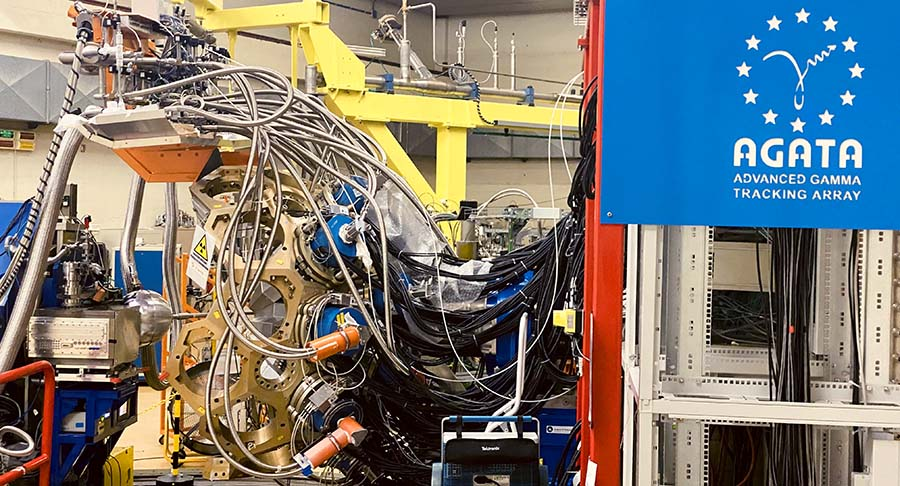Orateur
Description
The disappearance of the N=20 shell closure in the so-called “island of inversion” around $^{32}$Mg is one of the most striking examples of the strength of nucleon-nucleon correlations. In this region, the quadrupole-deformed intruder configuration (based on a multi-particle multi-hole configuration) becomes the ground state, subverting the expected shell ordering predicted by a harmonic oscillator plus spin-orbit term. The odd N=21 isotones therefore yield the possibility of a direct investigation of the ordering between single-particle and intruder states along the same chain, although experimental study of such nuclei becomes increasingly difficult with decreasing Z. Available spectroscopic evidence suggests that in $^{37}$S the single-particle and collective intruder configurations are strongly connected, thus placing $^{37}$S at the upper edge of the island of inversion. However, information on observables directly related to the wavefunction composition is rather scarce. The first excited state (3/2$^{-}$ state at 646 keV) is the only one with a measured lifetime, but no transition probability has been firmly determined for intruder states, in particular those connected with strong branching ratios to the a priori spherical single-particle states.
A combined DSAM+RDDS measurement has been performed to measure such transition probabilities, in particular for the 3/2$^{+}$ state at 1397 keV (1p-1h nature) and the 7/2$^{-}$ at 2023 keV (2p-2h nature), exploiting the full performance of the AGATA spectrometer in terms of energy and angular resolutions. The $^{37}$S nucleus has been produced via the $^{36}$S(d,p) reaction in inverse kinematics, detecting the recoiling protons in SPIDER to obtain an accurate reconstruction of the excitation energy of $^{37}$S.
This contribution will show the status of the analysis and some preliminary results obtained so far

